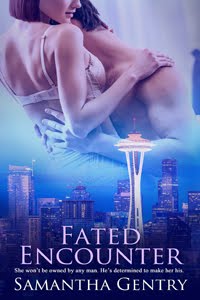As children, we're told we can grow up to be anything we
want. We can grow up and change the
world. However, the reality is that when
we grew up we hopefully had a positive impact on our family, our jobs, our
surroundings and hopefully our community.
But not many of us have actually ended up changing the world in massive
ways merely by working hard, thinking quickly or simply doing our jobs
properly. Many of these people were lost
to history for a number of reasons—cultural differences, minority status,
military secrecy and, in a few cases, just plain modesty.
THE GHOST ARMY
It's World War II, the Army's 23rd Headquarters
Special Troops, also known as the Ghost
Army, played a major role in putting a halt to Hitler's advances through
Europe. In reality, the Ghost Army consisted of 1100 soldiers
who were artists, illustrators, sound technicians, and other creative types who
used their brains and specific creative skills to win battles. Their mission was to trick the enemy into
believing there was a huge military presence where one didn't exist. They created the illusion of air fields with
hundreds of planes, harbors with large navy vessels, trucks and tanks ready to
roll—all decoys that looked very real to enemy aerial reconnaissance. Through the use of fake inflatable tanks (pictured above),
trucks, and weapons in conjunction with war noises through huge military
speakers, and buildings that were basically movie sets, the Ghost Army played a major role in
helping America's Ninth Army to cross the Rhine River deep into German
territory. The Ghost Army pulled off more than twenty such missions, all of which
remained classified until 1985.
FRANK WILLS
Security guard Frank Wills was making his rounds when he
noticed a small piece of duct tape on a door of an office complex. Wills removed the tape, but found it there
again on his next patrol of the night.
He immediately called the police.
The date—June 17, 1972. The
location—an office complex in Washington D.C. named Watergate (Watergate consists of several buildings—the office
building, apartments, and a hotel). Minutes later, five middle-aged men were
caught ransacking the headquarters of the Democratic National Committee thus
launching the scandal uncovered by Washington Post reporters, Bob Woodward and
Carl Bernstein—a scandal that would eventually cause President Richard Nixon to
resign. Woodward and Bernstein's book, All The President's Men, became a movie
of the same name starring Robert Redford and Dustin Hoffman. Sadly, Frank Wills' life took a turn for the
worse after that. He quit his job at the
Watergate after being turned down for a raise (wow…if you don't give this guy a
raise, who are you going to give one to) and found that many places were too
afraid to hire him as a security guard allegedly because they feared
retaliation by Republican politicians.
He ended up in prison, then destitute, before dying of a brain tumor in
September 2000.
JOSEPH WARREN
Even though he's generally unknown to all but the most
dedicated Revolutionary War aficionados, there are thirty-eight towns and fourteen
counties named after him. A Boston
doctor who performed the autopsy on Christopher Seider, the first American
killed by British troops in the Boston Massacre. When things between the colonists and the
British became even more heated, he put together a military unit and
participated in the "don't fire until you see the whites of their eyes"
Battle of Bunker Hill (which was
actually fought on Breed Hill) where he died from a British musket ball through
his brain.
ROSALIND FRANKLIN
We all know some facts about DNA such as you can extract it
from fossilized remains to bring back dinosaurs and it can be altered to create
ninja turtles. But seriously…Rosalind
Franklin, physical chemist and pioneering x-ray crystallographer with a PhD
from Cambridge, was born in London, England.
The new technique of using x-ray crystallography on things that weren't
actually crystals aided in accurately recording the structure of DNA. Even though her work provided the linchpin of
James Watson and Francis Crick's articles establishing the double helix theory,
she was mostly ignored and brushed aside as far as being given credit for her
work. She died in 1958 at age thirty-seven
from ovarian cancer.
MARY ANNING
Highly intelligent, a fossil collector and paleontologist at
the beginning of a century marked for tremendous advances in the practice and
philosophy of science, she was royally screwed over from the beginning. She had three strikes against her—she was
poor, a religious minority, and (gasp—worst of all) a woman. She was officially shunned by the British
scientific establishment even though she had discovered the world's first
correctly identified ichthyosaur skeleton when she was only twelve years old. Soon, geologists and paleontologists across
the Western world knew her by reputation despite receiving almost no formal
education and barely having enough money for journal subscriptions. She died in 1847 of breast cancer. She received an eulogy from the Geographical
Society of London (where women weren't admitted until 1904), a glowing article
by Charles Dickens in 1865 [I double checked this because my first thought was
"they must have meant Charles Darwin the scientist rather than Charles
Dickens an author of fiction," but Dickens was correct], and a 2010
mention by the Royal Society as one of the ten British women having the
greatest impact on history. And there
was a tongue-twister about her day-to-day business of selling marine
fossils. We know it better as She sells sea shells down by the sea shore.
ABU L-HASAN 'ALI IBN
NAFI' (ZIRYAB)
One of the most significant people in Islamic culture remains
nearly anonymous in European history even though he single-handedly set the
groundwork for traditional Spanish music.
Ziryab was a highly educated North African slave in the approximate year
of 800. In addition to his strong point
of music, he invented numerous dyes and chemicals for clothing, makeup, and
hygiene. He introduced the idea of
seasonal fashions, came up with the structure of the traditional three-course
meal consisting of soup, entrée, and dessert.
He also popularized shaving and short haircuts as a way of beating the
fierce Mediterranean heat. It's also
said he invented the world's first underarm deodorant and an early type of
toothpaste that was both effective and also had a pleasant taste.
LA MALINCHE/DONA
MARINA
Dona Marina (as the Spanish called her) was one of twenty
slave women given to the Spanish as the spoils of battle in 16th
century Mexico. Her skill with languages
made her far more valuable than merely being Cortes' mistress. She was instrumental to the small Spanish
army's eventual victory by interpreting intelligence information and
cultivating allies among the many tribes fed up with being kicked around by the
Aztecs. She's a controversial figure
today. Some argue that she was working
in the best interests of her native people by aiding the Europeans and
convincing Cortes to be more humane than he might have been. Others think she was a traitor and her name
is almost a curse. Either way, without
her the Cortes expedition might not have succeeded and history would have been
changed forever.
VASILI ARKHIPOV
Vasili got his start in the Soviet Navy at the tail end of
World War II and worked his way up through the ranks where he became the
executive officer on the Soviet Navy's hotel class nuclear submarine K-19. From there, he was dispatched to the
Caribbean to command a group of 4 nuke-armed Foxtrot-class patrol subs. And it was there that he made a decision that
literally had a life and death impact on the future of the world. He found himself in a sticky situation as his
Foxtrot came under what seemed very much like an American attack (The US Navy
saying it was only dropping practice depth charges in an ill-considered attempt
to force the sub to the surface). The
Soviet sub's captain and political officer both demanded that they retaliate
with nuclear torpedoes. They hadn't had
any contact with Moscow in days and didn't know if World War III had actually
started or would start as soon as they fired back. Vasili refused to authorize the launch. The sub eventually surfaced and scampered
away from the American task force with no further interaction. Vasili advanced to vice-admiral, retired, and
died in 1998. It was four years later
when former NSA head, Thomas Blanton, called him "the guy who saved the
world."





























8 comments:
Wow, really interesting. I especially love the ghost army!
The Ghost Army reminded me of a story I saw about Hollywood set designers and the war effort. They designed camouflage that hid our munitions factories and military bases from the air. Very cool photos! I guess you could say they were the first to deal in alternative reality on a large basis. :-) Love this post. Thanks!
You always write the most interesting posts. Thanks for doing this.
Jennifer: Me, too...I found the entire ghost army thing fascinating. I've seen things on the History Channel about it.
Thanks for your comment.
Ashantay: During WWII, the huge Lockheed plant in Burbank, Ca., was hidden from sight from anyone in the air. Burbank is the home to Warner Bros. and Disney Studios and Universal Studios is just down the street. They literally covered all the plant buildings and parking lots with netting and canvas that had been painted to look like a residential neighborhood including street lights and house lights at night and they even had the availability of moving cars on the fake streets so they weren't always in the same place. I saw some old photographs and it was amazing.
Thanks for your comment.
C.B.: Thanks, I'm glad you enjoy them. I generally pick out topics that interest me or expand on something I've seen on the news. And there's also the promotions for my books.
Thanks for your comment.
I agree. You're posts are always so interesting and I love where you're going with this one. Thanks again for another great read.
The first person killed in the Boston Massacre was actually Crispus Attacks, a black man. He is also considered to be the first American killed in the American Revolution.
Post a Comment